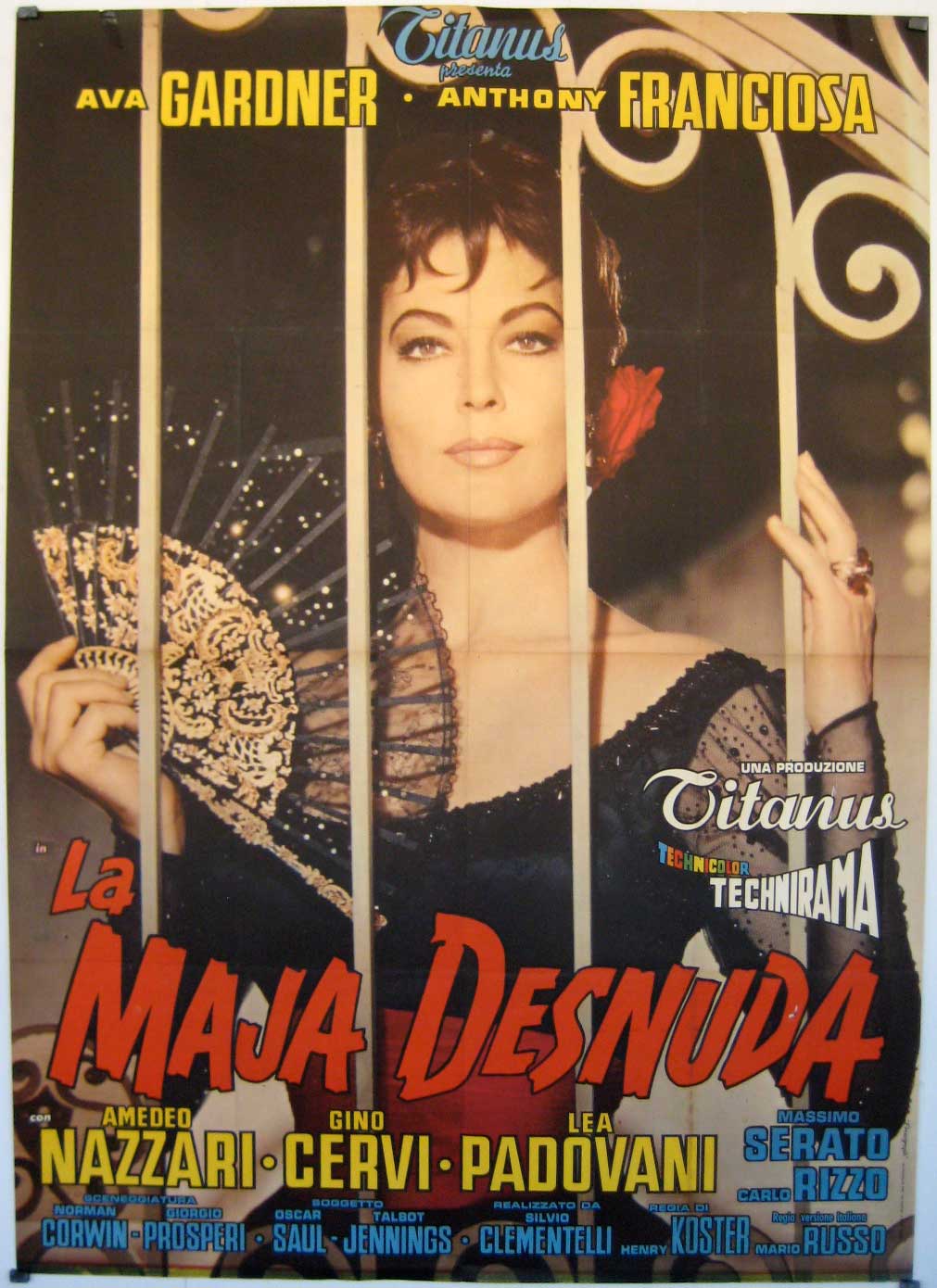Thanks to its rich Technicolor, sumptuous costumes and truly magnificent sets, La maja desnuda throws down the gauntlet to Hollywood in its own backyard, and is victorious. As in all the best highly ambitious melodramas, the tumultuous love story is set against a backdrop of historical conflict. But in this film, the flame that burns brightest is Ava Gardner, one of the most hypnotic stars in the history of cinema. It is directed by Henry Koster, a veteran master of American cinema, who saw it as the greatest production of his life’s work: a few years earlier, he directed The Robe, the film that introduced the grandeur of CinemaScope to the world.
The incredible visual splendour of this film, however, must for the most part be attributed to cinematographer Giuseppe Rotunno (a few years later, his genius will be responsible for the photography on Visconti’s Il Gattopardo), who manages to accurately recreate some of the Spanish painter’s most famous works.
Goya, a young and hot-bloodied painter, protects the Duchess of Alba from a drunk customer in a tavern. The two soon fall in love. Goya is appointed court painter. However, the duchess is sent into exile, as the result of a plot by the ruthless Prime Minister Godoy. She fears that her lover will also end up in the hands of her enemy, so she ends their relationship. Napoleon’s troops attack Spain and the duchess does everything she can to defend her country, but Godoy has her poisoned. At her deathbed, Goya discovers the truth: that her love for him was so great she sacrificed her happiness for his safety.
Thanks to its rich Technicolor, sumptuous costumes and truly magnificent sets, La maja desnuda throws down the gauntlet to Hollywood in its own backyard, and is victorious. As in all the best highly ambitious melodramas, the tumultuous love story is set against a backdrop of historical conflict. But in this film, the flame that burns brightest is Ava Gardner, one of the most hypnotic stars in the history of cinema. It is directed by Henry Koster, a veteran master of American cinema, who saw it as the greatest production of his life’s work: a few years earlier, he directed The Robe, the film that introduced the grandeur of CinemaScope to the world.
The incredible visual splendour of this film, however, must for the most part be attributed to cinematographer Giuseppe Rotunno (a few years later, his genius will be responsible for the photography on Visconti’s Il Gattopardo), who manages to accurately recreate some of the Spanish painter’s most famous works.
Goya, a young and hot-bloodied painter, protects the Duchess of Alba from a drunk customer in a tavern. The two soon fall in love. Goya is appointed court painter. However, the duchess is sent into exile, as the result of a plot by the ruthless Prime Minister Godoy. She fears that her lover will also end up in the hands of her enemy, so she ends their relationship. Napoleon’s troops attack Spain and the duchess does everything she can to defend her country, but Godoy has her poisoned. At her deathbed, Goya discovers the truth: that her love for him was so great she sacrificed her happiness for his safety.
